Type: Medium Tank
Nation: USA
Period: World War 2
Location: Wibrin, Belgium
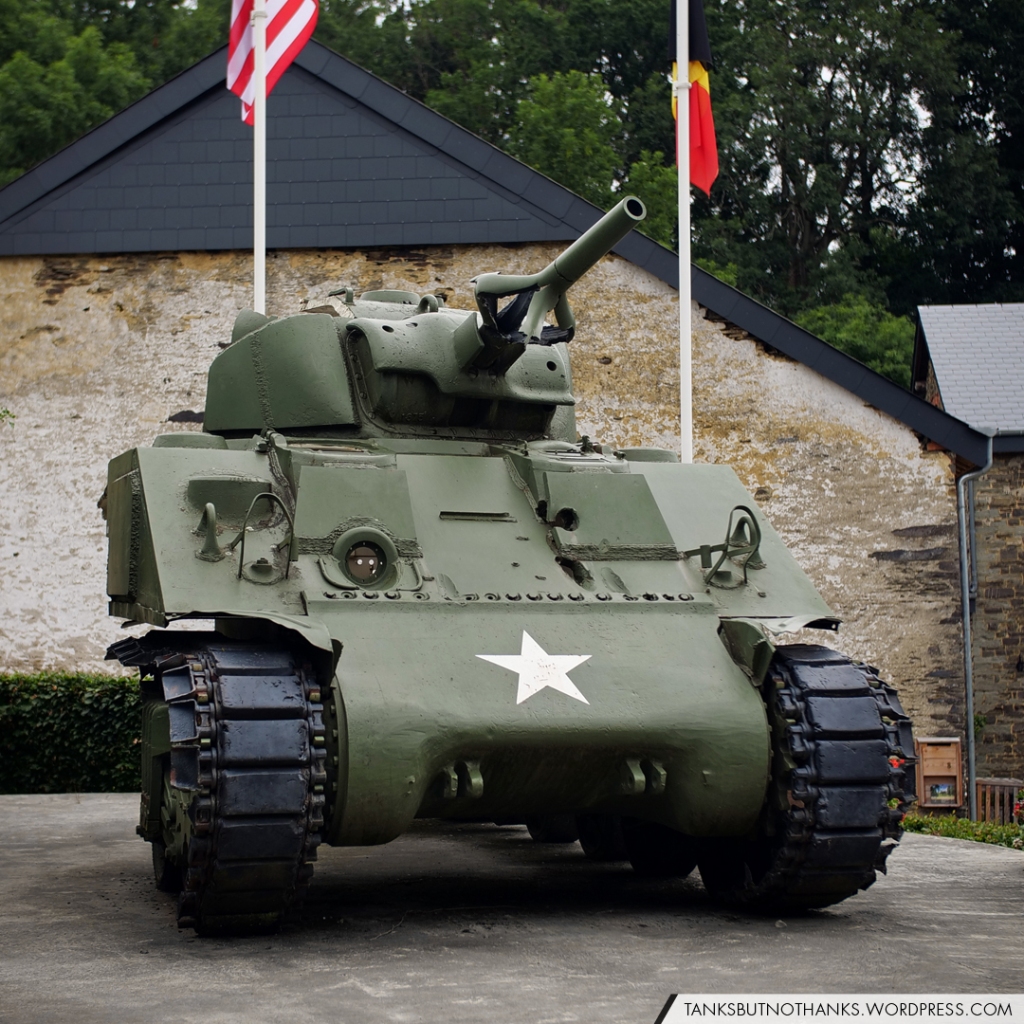
The sleeping giant
At the beginning of World War 2 the US Armys’ tank force was virtually nonexistent. Even Poland possessed more tanks when they were attacked by Nazi Germany in September 1939. The Great Depression and long years of isolationism had drastically reduced military budgets, but the success of the German tanks in the 1940 invasion of France made the Americans recognise the need to build up a modern armoured force as soon as possible. They soon pressed the M3 Grant/Lee into production as a stopgap solution, because they simply needed more time to develop a satisfactory medium tank with a turret-mounted 75 mm dual-purpose gun – which eventually became the M4 Sherman. First introduced in 1942, this solid, versatile and very thoroughly tested design quickly became the ubiquitous standard tank of the Western Allies for the rest of the war. When production was halted in 1945, almost 50,000 units of the Sherman’s numerous variants had been completed.
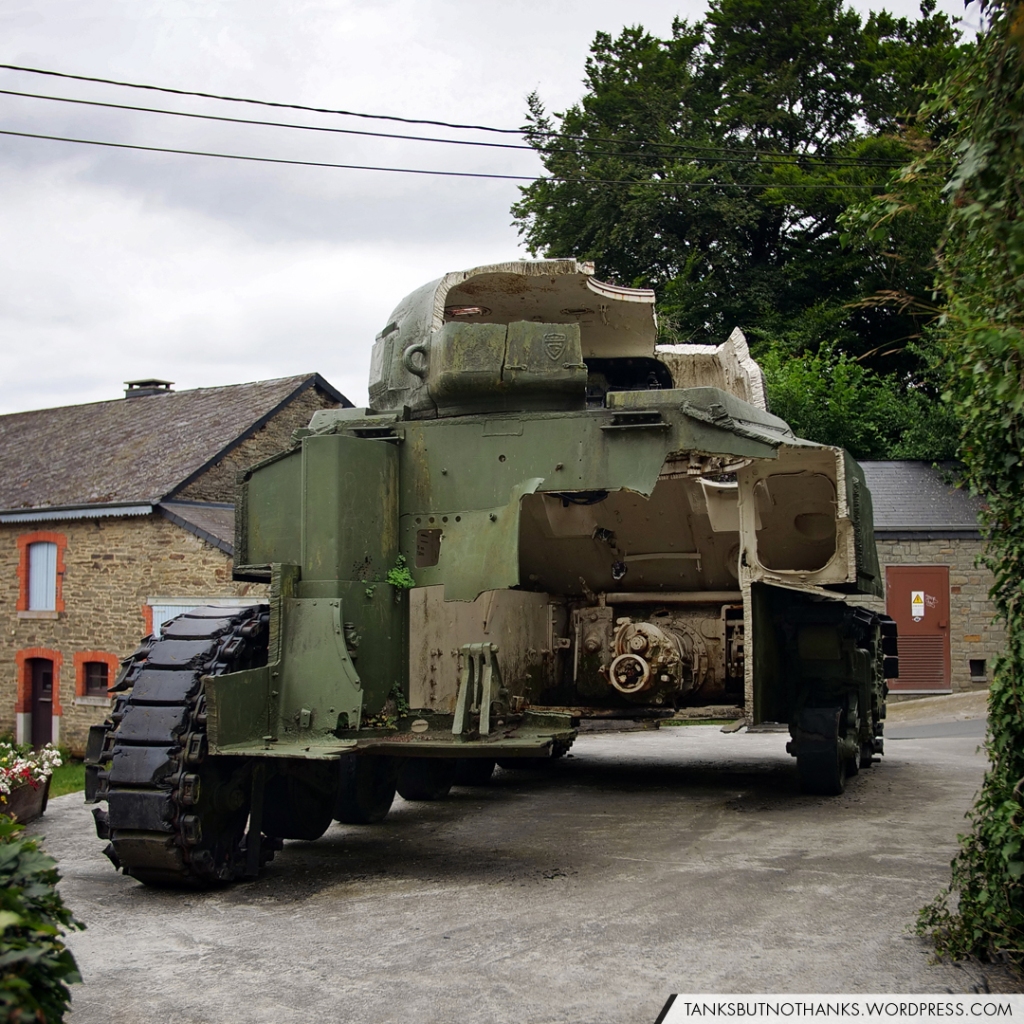
Light it up
The early Shermans infamously gained a poor reputation of catching fire when hit. Many unpleasant nicknames such as “Tommy cooker” and “Ronson” (after a brand of cigarette lighters) have piled up over the years. The reason for the (very real) fire hazard was not the petrol engine but the propellant in the ammunition. It had a tendency to ignite within a matter of seconds after the tank’s armour was penetrated. Starting in summer 1943, the Sherman was therefore provided with additional appliqué armour patches welded over the ammunition stowage racks in the sponsons: two on the right and one on the left side. These and other upgrades certainly improved the M4’s survivability, but it was still common practice for crews to abandon their tanks as soon as they were hit – resulting in a surprisingly low death rate among American World War 2 tankers, especially when compared to the infantry. In reality, the Sherman’s burn rate was not considerably worse than that of the Panzer IV, the Cromwell or other tanks of the time.
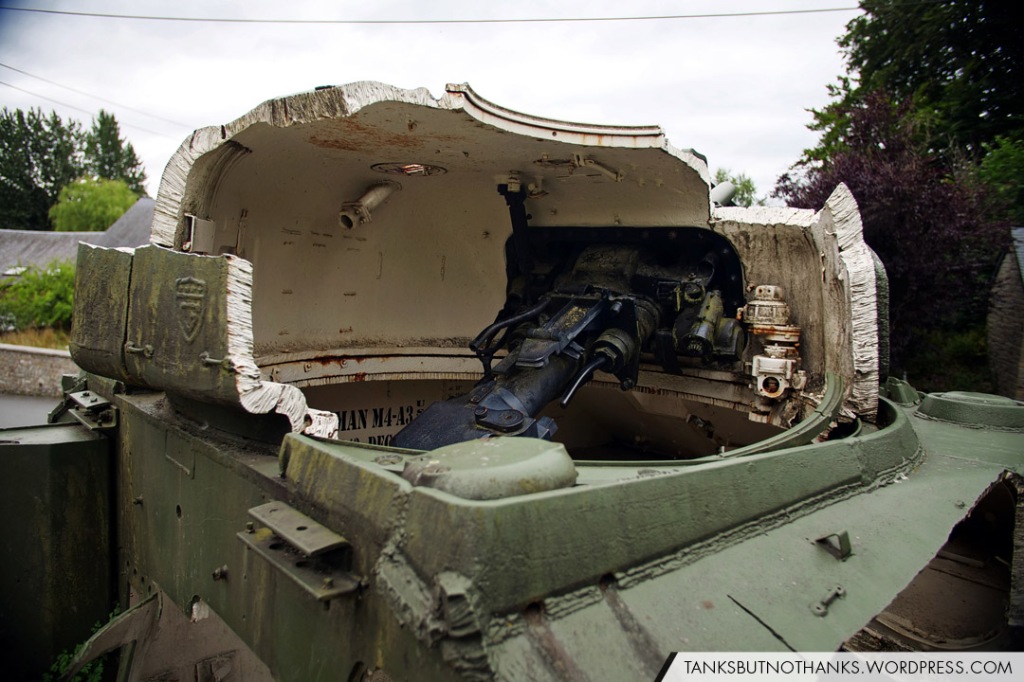
Countering the counterattack
This particular vehicle was named „Ginsling“ after a cocktail. In a TV interview with the German veteran Hans Herbst he claimed that he and his crew had been with a troop of Panthers which knocked out this very M4 on 14 January 1945 during the Allied counteroffensive in the final phase of the Battle of the Bulge. Allegedly one of their shots had bounced off the Sherman‘s glacis plate and destroyed its gun barrel before multiple hits eventually set the vehicle on fire. However the M4 was actually knocked out in the vicinity of Wibrin which detracts from Mr. Herbst’s memory’s reliability. There are indications that the gun’s recoil cylinders had been drained from the damage and that a 75mm round which was still in the barrel was safely detonated by the Belgian explosive ordnance disposal service after the end of the fighting.

Identity crisis
Wibrin‘s major Monsieur Delacolette arranged for the tank to remain in the town to serve as a war monument. In 1950 local scrap merchants were tasked with removing wrecks in the area and started to cut up the tank – as they did not know that it was to be spared. When the major heard about this and came to stop them, it was almost too late: The rear end was already gone. After that incident the tank was moved to its current resting place next to the local church. The text written on the inside wrongly identifies the vehicle as an M4A3 built on 16 January 1942, but it is in fact an M4. The vehicle‘s features indicate that it was produced in the second half of 1943 by the American Locomotive Company (ALCO) – a manufacturer that never built the M4A3. And what remains of Ginsling’s engine bay certainly looks more like the mounting arrangement for the M4’s radial engine, not the M4A3‘s Ford V8.
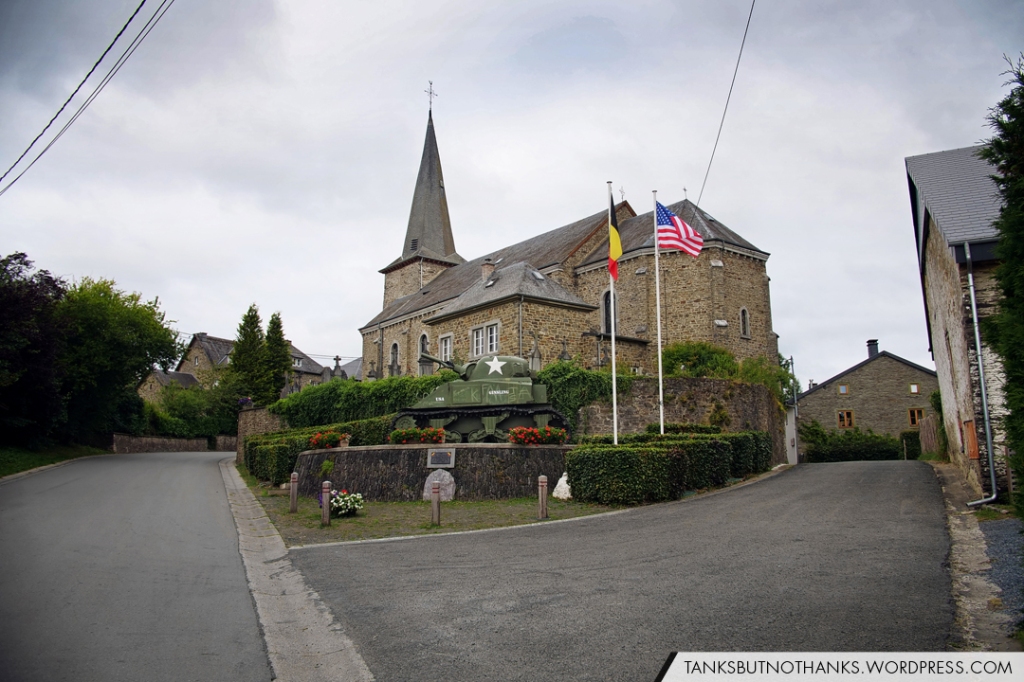
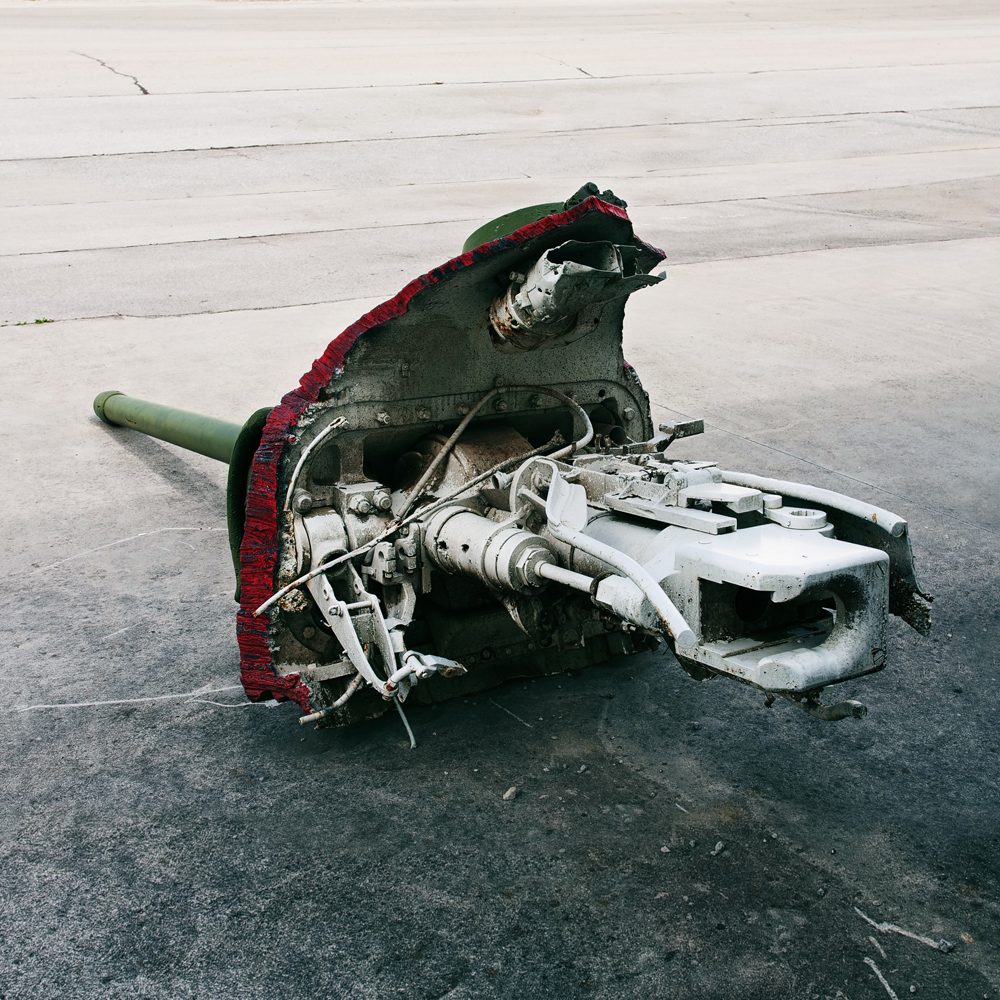
14 responses to “M4 Sherman “Ginsling””
[…] a big improvement over the Stuart’s 37 mm. M24’s gun fired the same ammunition as the M4 Sherman, which greatly simplified logistics. After World War 2 the Chaffee was exported to many friendly […]
LikeLike
[…] the British Army (like „Grant and „Lee‘‘ for the M3 Medium Tank and „Sherman“ for the M4), the name „Hellcat“ was chosen by the manufacturer for once. The small M18 weighed only about […]
LikeLike
[…] a new tank since he saw no “battle need” for anything heavier and more powerful than the 30-ton M4 Medium – which, to be fair, had been performing very well in North Africa and […]
LikeLike
[…] the Panther for its wide tracks that gave it excellent mobility over soft terrain. Even though the Sherman was a third lighter than the 45-ton Panther, it often got stuck in places where its German opponent […]
LikeLike
[…] Pershing. Originally the Panther had been designed to weigh 30 metric tons like the T-34 and the M4 Sherman, but as requirements changed, the combat weight went up accordingly. At one point Hitler personally […]
LikeLike
[…] it from sinking into soft ground – an idea which would famously be rekindled for the American M4 Sherman‘s “duckbill” end connectors during World War […]
LikeLike
[…] solution was a medium tank with a turret-mounted 75 mm dual-purpose gun which eventually became the M4 Sherman, but the matter was found so urgent that an interim tank was developed that could be pressed into […]
LikeLike
[…] by the US Army in February 1942, although its designation misleadingly suggests that the standard M4 came first. The numbering system for the Sherman’s variants had simply been carried over from the […]
LikeLike
[…] M4 was considered the “standard” Sherman, although the M4A1, M4A2 and M4A3 all went into […]
LikeLike
[…] units, it was the single most produced Sherman variant. To avoid a production bottleneck with the M4’s and M4A1’s radial engines, the M4A2 was powered by a General Motors twin straight-six diesel […]
LikeLike
[…] – compared to 60–80 percent for the early “dry stowage” vehicles. Production of the M4, M4A1 and M4A2 was also switched to the second generation versions in early 1944, while the M4A4 […]
LikeLike
[…] shortage of radial engines for the M4 and M4A1 had led to the production of both the M4A2 with an improvised twin diesel engine as well […]
LikeLike
[…] “Composite hull” Sherman combined the welded hull of the standard M4 with a rounded M4A1-style cast front. Chrysler came up with this design in 1943, because a large […]
LikeLike
[…] the Panther was a superior vehicle on paper. Its 7.5 cm high velocity gun could destroy a T-34 or a Sherman over long distances, way before these tanks could come close enough to penetrate the Panther‘s […]
LikeLike